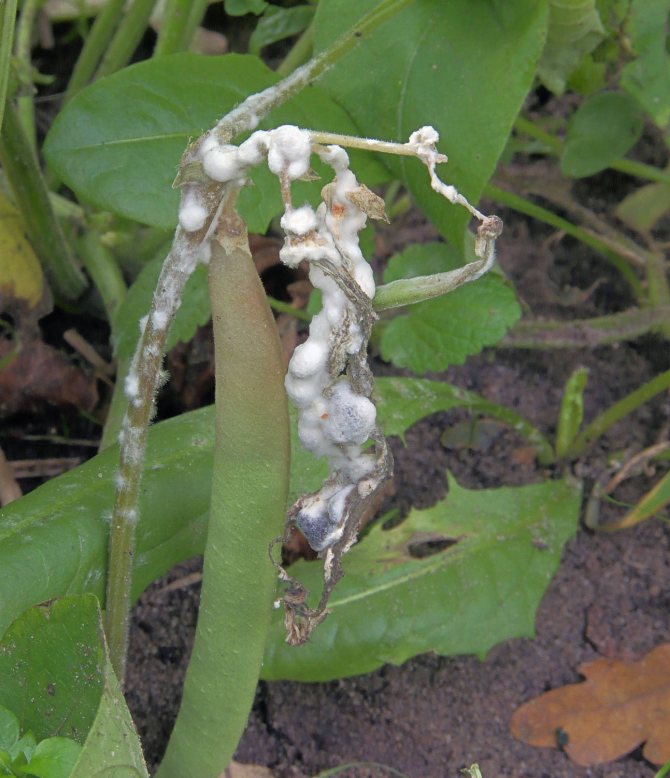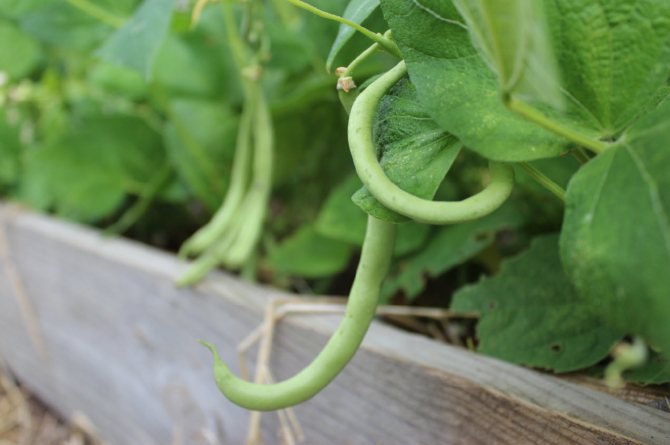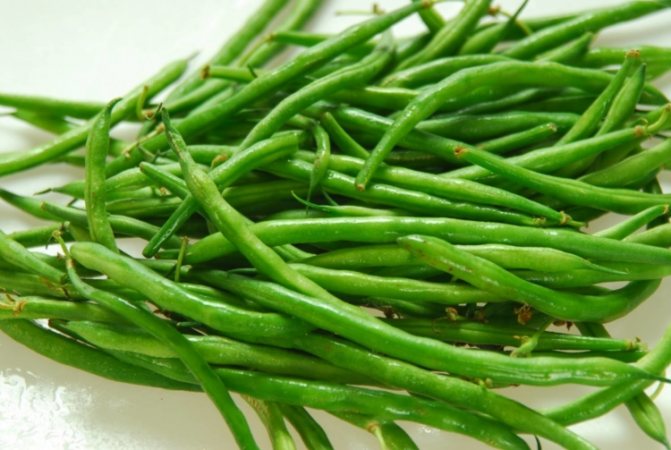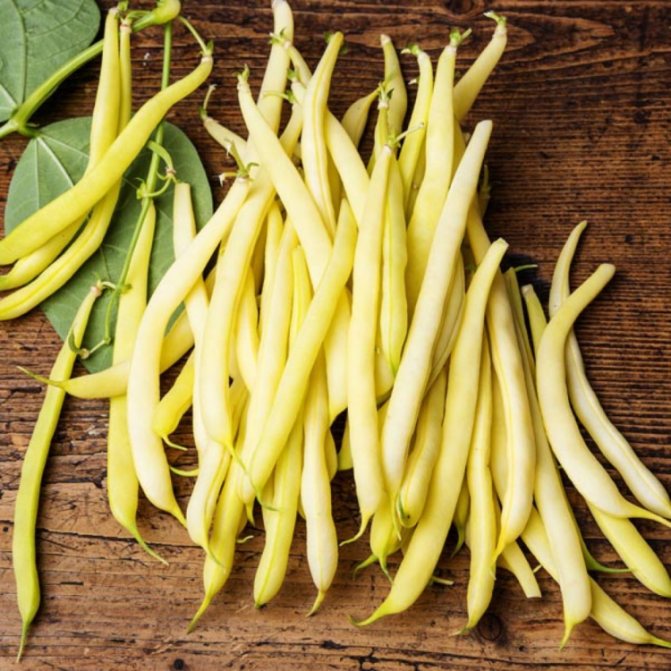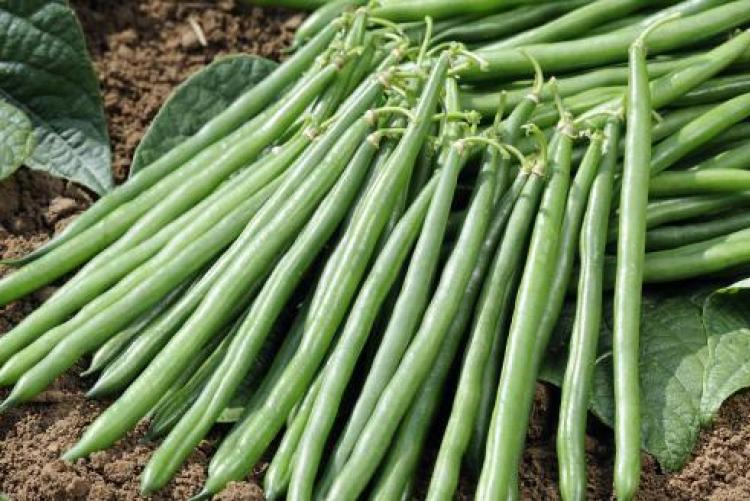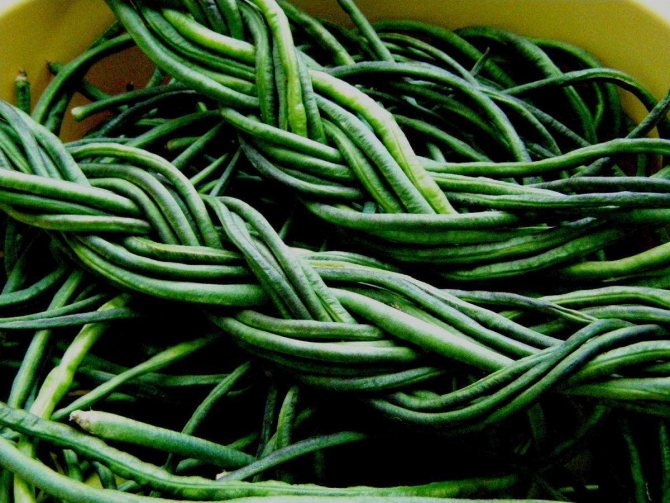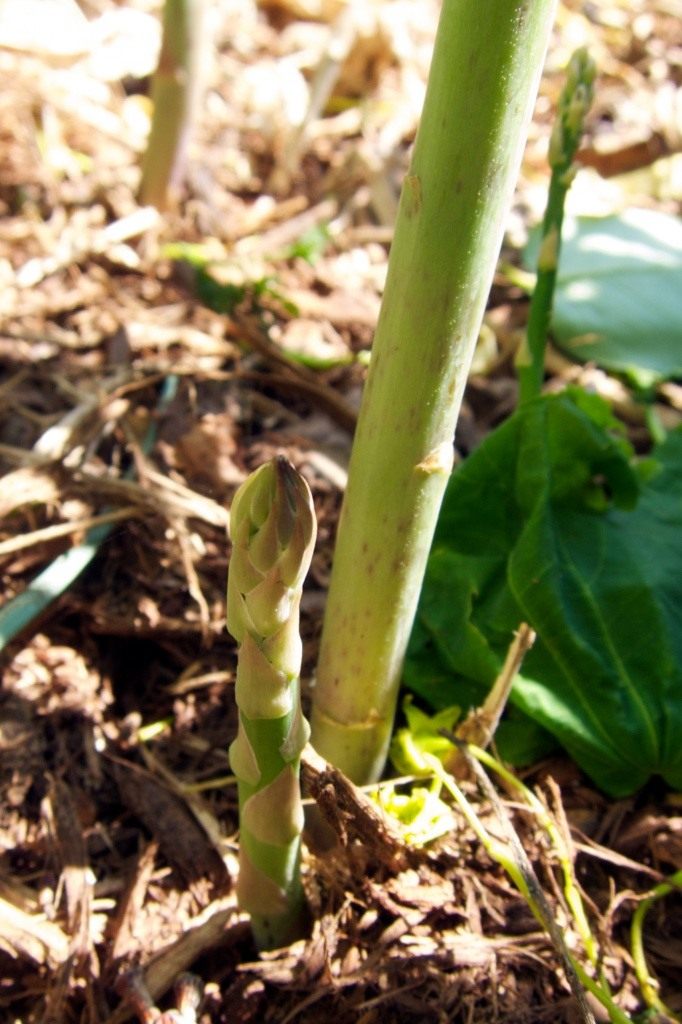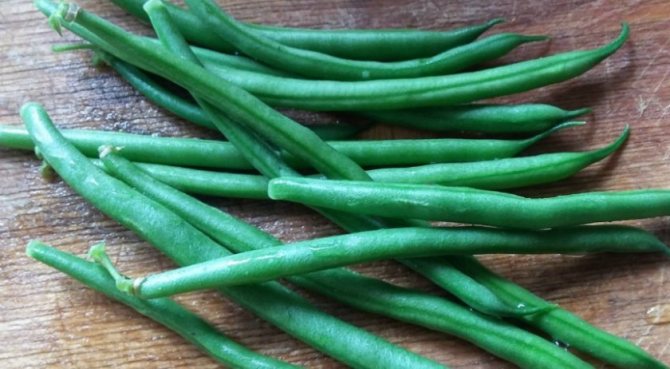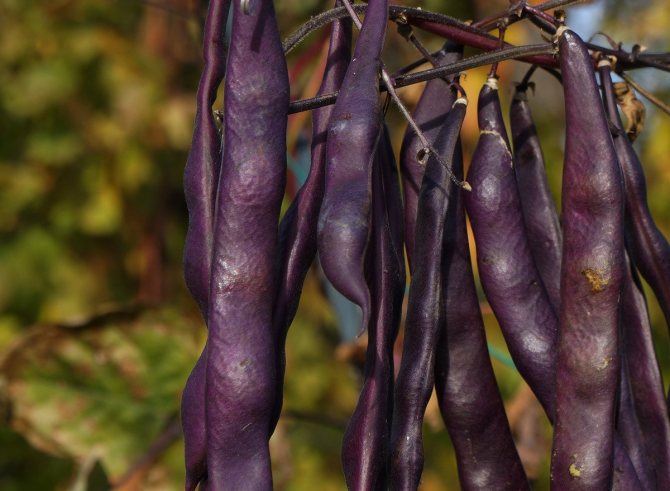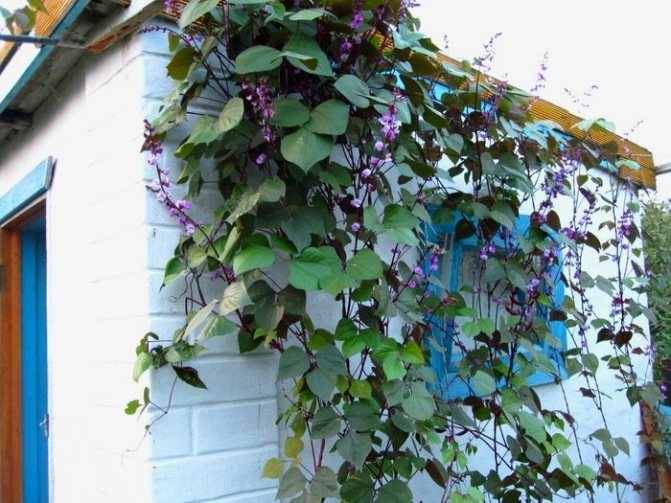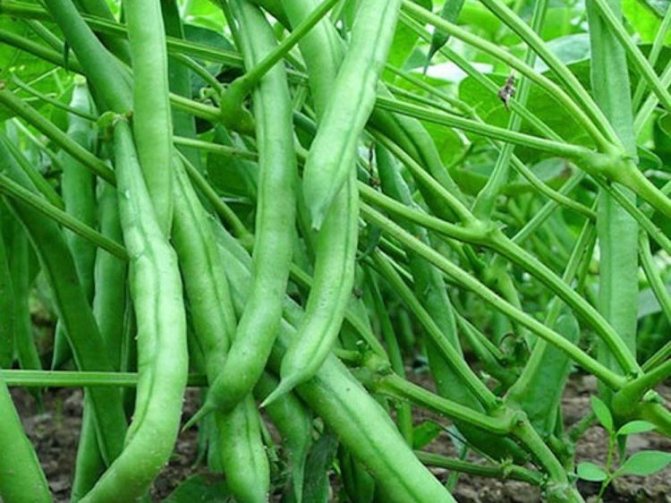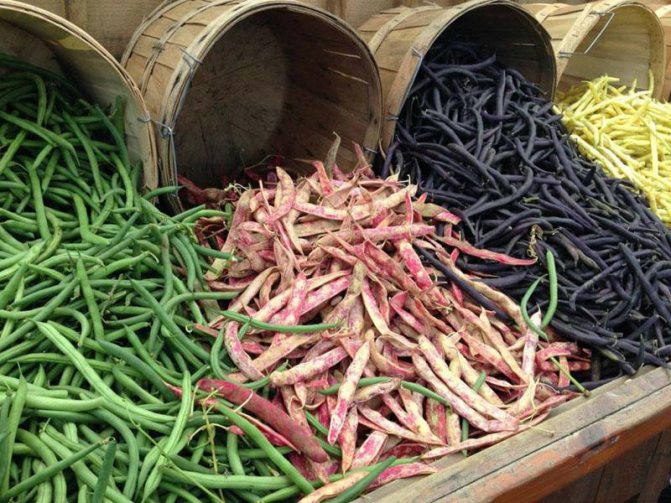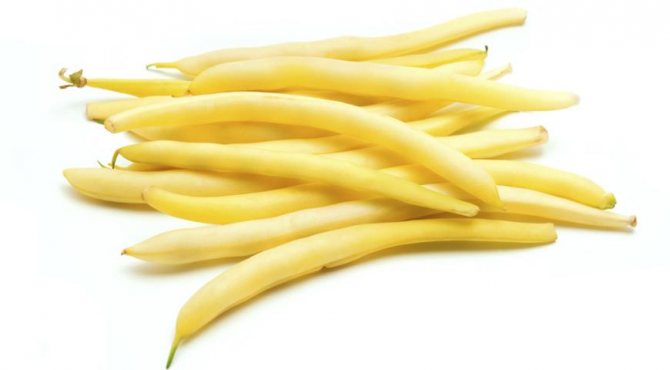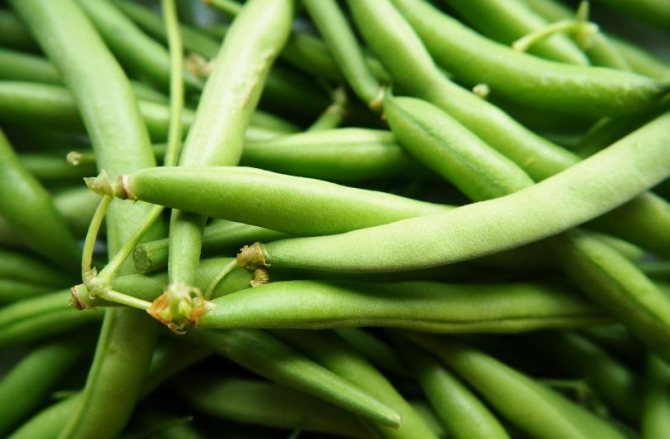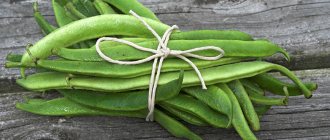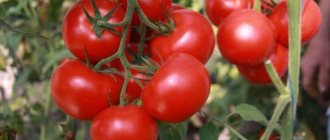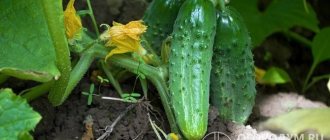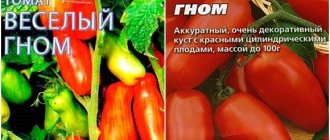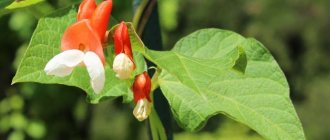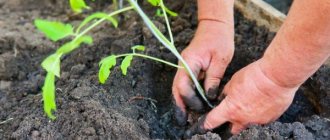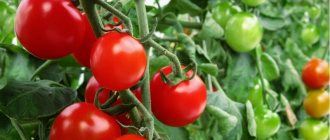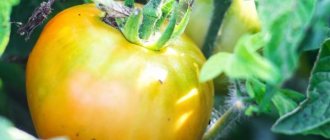Beans are a crop of the legume family. It is believed that Columbus brought it to Europe, like many other plants, and America is the homeland of beans. Today, this type of legume is very popular, because in terms of the content of amino acids, vitamins and microelements, in terms of its composition, beans are more close to meat than other crops.
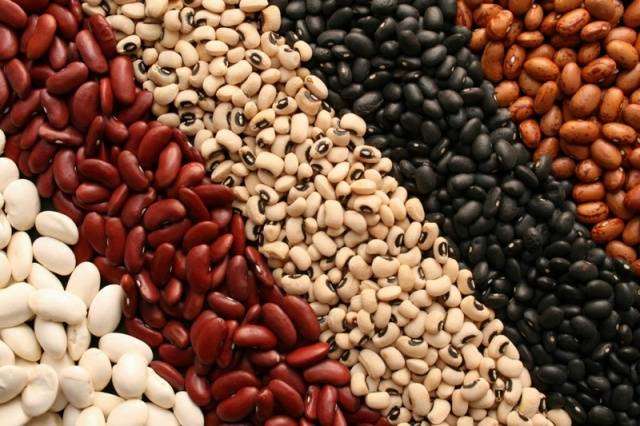
There are many varieties of beans, this culture is divided according to several characteristics:
- the way of eating (pods or seeds, beans);
- type of plant (bush and climbing varieties);
- growing method (for open ground and for greenhouses);
- taste characteristics;
- color and shape of fruits / pods.
How to choose the best varieties of beans for your site, you can learn from this article.
Types of legumes
By the appearance and shape of the bush, the culture is divided into:
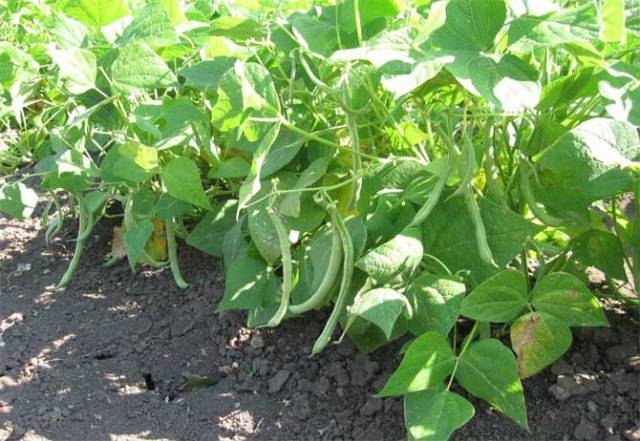

Bush beans are a low-growing subspecies with compact bushes, the height of which reaches 40-60 cm. It is these plants that are grown in farm fields, used for industrial purposes. Plants are unpretentious and cold-resistant, bush beans can even withstand the harsh Siberian climate. Bushes begin to bear fruit early, amicably giving away the entire crop.
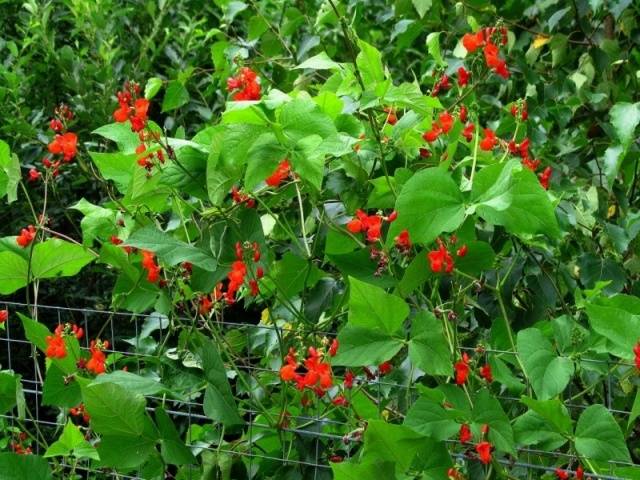

Climbing species are weaving vines that can be up to five meters long. This variety has a longer growing season, so in cold Siberia it is better not to grow such varieties of beans in the open field - the seeds simply do not have time to ripen. But curly varieties significantly save space on the site - you can get a decent harvest from one meter of land. In addition, curly lianas become an excellent decoration for the local and garden areas.


The best varieties of the genus Vigna
Relatively recently, Russian gardeners did not even know about such a plant as a cowpea. After the appearance of imported seeds on the market, it was believed for some time that these were some special varieties of green beans with better characteristics, and they even called them the Vigna variety series. In fact, cowpea is a separate genus of the legume family native to Asia. Therefore, it is sometimes called Chinese long beans.
Just like the asparagus beans, the cowpea has bushy and curly forms. But pods with unique and delicious properties grow mainly on climbing varieties. In appearance, the curly varieties of cowpea really resemble asparagus beans. But only her pods grow in length sometimes up to 100 cm. The sight of a fruiting cowpea is really impressive. Its seeds are usually medium-sized, of different colors - from light brown to black. The pods themselves are usually green, and in cross-section they are round. In all the curly varieties of cowpea, beans are distinguished by a delicious taste and contain even more valuable and nutritious substances than asparagus beans.
Important! Cowpea varieties differ in terms of ripening, the length of the pods, their weight and yield.
Caring for cowpea is no more difficult than caring for asparagus beans. Plants are only slightly more thermophilic, so seeds can be sown in open ground after the threat of recurrent frosts disappears.
Macaretti
One of the very first varieties of cowpea, obtained by Russian breeders back in 2007, turned out to be very successful. The pods are not very long, reaching only 30-35 cm. Moreover, the lowest of them are fixed at a height of 40 cm.But the weight of one pod can already be considered decent - 25-27 g.
The variety is more likely to be mid-season - the pods are suitable for harvesting on 62-68 days of growing season. The seeds are small, brown. The yield from one plant can reach 1.5 kg. Taste qualities, as, indeed, of all cowpeas, are excellent. The pods can be frozen, canned, made into salads, and processed in any other way.
Countess
The second attempt was even more successful. The Countess is rightfully considered one of the best Russian varieties of cowpea. It ripens early - on the 55-60 day of the growing season. Pods with good care can reach 60-80 cm in length. Moreover, the mass of one pod can already exceed 50 g. Accordingly, up to 2 kg of pods can be obtained from one plant. Seeds are black, germinate very well and quickly. In addition, the Countess's cowpea is completely unpretentious in care.
Summer resident
This variety of cowpea appeared quite recently, in 2020, but in terms of yield it has already managed to become almost the best - 2.2-2.5 kg per plant.
Vigna Dachnitsa - early maturing, the pods can be eaten 55-60 days after germination. Their length is from 50 to 80 cm and more, and the mass of one is 55-65 g. The seeds are small, black. The plant is covered with light reddish-purple flowers during flowering.
Kalancha
Another worthy variety of cowpea with similar characteristics from. Early ripe, powerful, curly with beautiful flowers. The pods reach a length of 86 cm and more, each of which weighs 50-55 g. 2-2.1 kg of delicious fruits are harvested from one plant. Seeds are small, black.
Lillian
This variety has already been obtained by breeders of another Russian. But its characteristics are no less attractive. In terms of ripening, Liliana is mid-season. From germination to harvest, 80-84 days pass.
The pods reach a length of 50 cm or more. The mass of one pod is 42-48 g. The seeds are medium-sized, brownish-purple. In terms of productivity, Liliana is ahead of all the above varieties - up to 3 kg of beans are harvested from one plant.
Siberian size
If the cowpea seems to be too thermophilic plant, then in this case the use of the Siberian size variety will help. The pods ripen after 55-62 days of vegetation and reach a length of 50 cm. The plant is climbing, but does not have such a powerful force as the previous ones. However, up to 2 kg are harvested from the plant. Seeds are ordinary, black. The taste is excellent, and most importantly, the cowpea of this variety is resistant to unfavorable weather factors and can survive low temperatures.
Yunnan
This variety is originally from China, but has been improved by Russian specialists. Plants are mid-season, with pods reaching a length of 60-70 cm and more. Weight of one - 25-28 g. Seeds are small, brown.
Mash
This is a fairly popular bush variety of cowpea, known since ancient times. It grows in height up to 50 cm. The length of the pods is relatively small - up to 12 cm. Each contains from 8 to 15 seeds. Both pods and seeds are olive green. Can be eaten raw, stewed and boiled 50-60 days after germination. With further ripening on the bush, seeds of delicious taste and small size ripen.
Vegetable and grain beans
Another characteristic of a legume depends on the form in which the plant is used for food. If only seeds are eaten - beans, it is a grain variety or hulling. When the whole pod is eaten, this variety is called asparagus or vegetable.
Vegetable varieties of beans are also called sugar beans, they can be eaten whole, due to the fact that the pod flaps are not covered with a hard waxy coating either in a mature or in a "young" state. The whole pod with peas inside remains soft and tender.Such beans are suitable for freezing, preparing various dishes, as well as for canning.
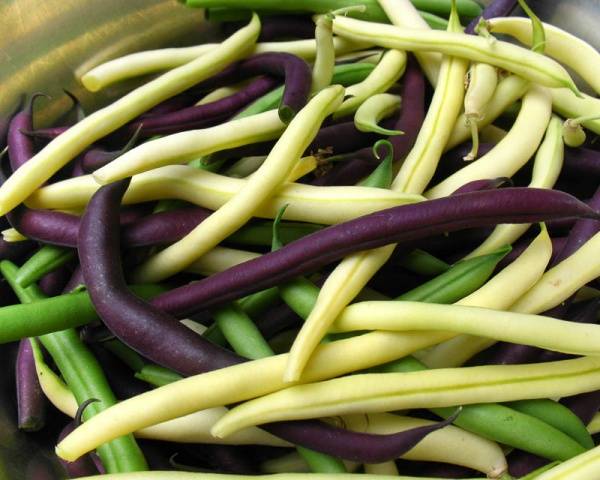

Hulling varieties must be husked to recover mature beans. The pods of such a culture are unsuitable for food - they are too tough and tasteless. But the beans are distinguished by excellent taste, interesting appearance and special nutritional value.
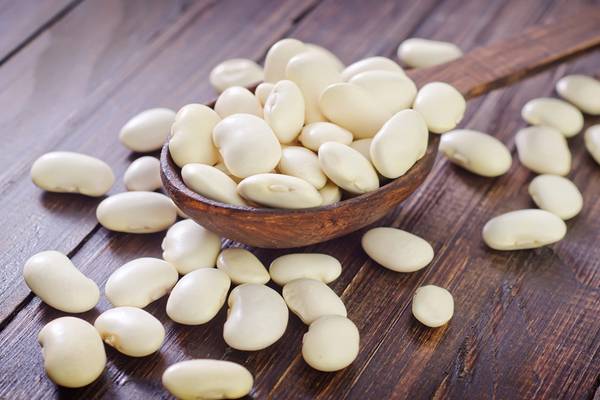

There are also semi-sugar varieties, which in an immature form have the properties of asparagus beans, and after full ripening they can be attributed to the peeling group. The pod of this variety is tender and juicy until the seeds inside it are ripe. However, after the beans have ripened, the pod becomes covered with a hard waxy layer and becomes very tough.
Features of cooking asparagus beans
If it is decided to boil the fruits, then the side fibers must first be removed. Begin peeling from the middle of the pods. When boiled, they are seasoned with garlic or sour cream sauce. With a dietary diet, it is better to steam the pods, so that more nutrients will be preserved.
For the preparation of treats, a frozen product is used. In the freezer, the fruits do not lose their beneficial natural qualities and mineral content. Throw the pods into boiling water without first defrosting, during which the nutritional value will be lost. When the beans are digested, they release carcinogens; instead of benefit, such asparagus beans will harm the body.
Varieties of beans
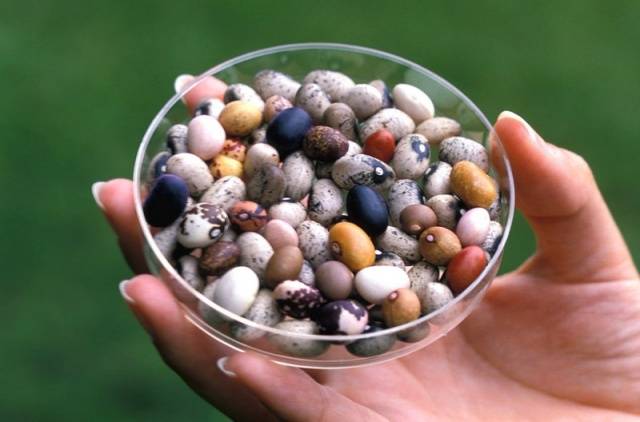

Beans are also classified according to their appearance, taste, and nutritional properties. Taking these factors into account, the following groups of legumes can be distinguished:
- Navy is a small-fruited white kidney bean. Seeds of this species are outwardly similar to peas, they are just as small and round. Navy is the record holder for fiber content, also contains vitamins A, B, PP, C and K, E.
- Lima is a white or green oily bean. The shape of the beans is slightly flattened, the size is large. The variety is very useful for blood vessels and heart.
- Kidney is a red bean whose seeds are shaped like a kidney. The color of these beans is red, purple.
- Black beans have a dark skin and a snow-white interior. The peas are small, rounded. After boiling, these beans lose their shape. Black beans contain the maximum amount of protein, prevents the formation of malignant tumors.
- Green beans - well tolerated freezing, retaining all the nutrients and vitamins. The pods can be of different shades: green, purple, yellow, beige. These varieties contain a large amount of vitamins, but the protein in the pods is less than in the beans.
- Pinto is a spotted variety with a white base with reddish specks. The variegated color of the beans becomes uniform after the beans are cooked. Contains a lot of iron, therefore it is recommended for anemia and diseases of the heart, immune system.
- Flajole - used unripe. The beans are green in color and taste similar to green beans.
- Chali are large white beans. They contain a lot of calcium and potassium, have antimicrobial and wound healing effects.
- Vigna is more commonly called "Black Eye". These are white beans with a black "eye" on the side. The skins of these varieties are thinner, so you will have to cook the beans less (about 40 minutes without soaking).
- Fava can be used in pods or ripe beans. The seeds are large, slightly flattened, colored brownish brown.


The listed varieties are most often used in European dishes. For Asian and Indian cuisine, there are many more varieties of beans with a specific aroma and taste (from sweet to spicy, herbal).
Historical information [edit | edit code]
Beans are one of the main plants of ancient agriculture in Peru, Mexico and other countries of South and Central America [2]. She is one of the oldest cultures in the world.
Application by the Aztecs [edit | edit code]
In the work "General History of the Affairs of New Spain" (1547-1577), Bernardino de Sahagun, relying on the information of the Aztecs about the properties of plants, gave various information about beans, in particular, about what its diversity is:
Black beans as large as auas (?). Chestnut beans. Red beans. White beans. Purple beans. Scarlet beans. Whitish beans. Beans painted in quail colors. Jasper beans. Small beans. Mouse beans - small and black [3].
Distribution in Europe [edit | edit code]
It was brought to Europe after the second trip of Columbus, and from there it came to Russia in the 17th-18th centuries [4]. This is probably why in Russia beans have long been called French beans. At first, it was grown as an ornamental shrub, and only over time, at the end of the 17th century, beans became widespread as a vegetable crop.
Bean varieties with descriptions and photos
On the territory of Russia, about 50 of the currently known varieties of beans can be grown. All of them have their own characteristics and advantages, the most popular will be described below.


Shrub asparagus varieties
The cultivation of green beans is still a curiosity for Russia. Here, the use of green seed pods with beans began not so long ago. However, local gardeners already have their own favorite asparagus varieties:
- "Saksa" is considered an early ripening variety, you can eat the pods as early as 50 days after planting the seeds in the ground. The length of the pods reaches 12 cm, inside they are pink beans. The bushes grow compact, their height does not exceed 40 cm.
- The "Butter King" also ripens relatively early - 50 days after planting the seeds. The pods are larger and longer - about 25 cm, colored yellow. The variety of beans is intended for canning and cooking.
- The "Purple Queen" has a medium ripening period. It can be grown on absolutely any soil, as it is a very unpretentious plant. 15 cm pods are painted in a beautiful purple hue, the variety is intended for canning.
- "Panther" has an average ripening period. Differs in yellow pods, intended for cooking and canning.
Classification of varieties by maturity
Asparagus beans are classified according to the ripening time of the crop. There are early, middle and late varieties. Most varieties have a limited shelf life, so after harvest, the pods need to be eaten or preserved for 2-4 weeks.
Early varieties
The early varieties include those varieties of asparagus beans that ripen in 45-55 days. Ripe pods need to be plucked regularly so that the plant continues to bloom and form new fruits.
Blue Lake
Tall asparagus beans. Ripens in 50-56 days. Stems reach 1.5-3 meters, they require the installation of supports. Fruits are light green in color and grow up to 16 centimeters long. Inside there are small light seeds. The leaves do not have coarse fibers, so the whole fruit can be eaten. 660 grams of fruit are harvested from one stem.
Fedoseevna
An early unpretentious and non-capricious culture with oblong green pods. The crop can be harvested as early as 46 days. The pods grow up to 20 centimeters long on lush bushes 0.75 meters high.
This plant has delicate lilac flowers and huge ternary leaves.
Shadow on the wattle
A variety of early beans bred in 2020. The harvest of greenish, juicy beans is harvested already on the 46th day. 4 kilograms of fruit are obtained from 1 square meter of the plot. The stem is long, curly, grows up to 1.5 meters. The size of the pods is 22 centimeters, the width is 10 millimeters. Inside the fruit are small white seeds.
Gait
Early asparagus beans. The harvest is torn down on the 50th day. On small compact bushes, many fleshy, elastic, juicy, even, medium-length dark green beans are formed.Inside - seeds of white color. This hardy and non-capricious variety produces 640 grams of fruit.
Yellow neck
Early bush culture. Light yellow beans 10-12 centimeters long are plucked for 55 days. The height of the bush is 0.35-0.40 meters.
Melody
Early maturing asparagus beans with curly, long stems that need to be tied to a support. Wide, flat, greenish pods are plucked at 55 days. The size of one fruit is 24-25 centimeters.
Gold necklace
Early, climbing culture, reaching 2 meters. The pods are yellowish, lumpy, up to 17-20 centimeters long, 20 millimeters wide. The beans are sweet and juicy.
Medium-ripening beans
Vegetable asparagus beans, which ripen on 60-75 days, are called mid-season. It is the most common variety in temperate latitudes.
Earring
Light green fruits are plucked as early as 60 days. The stem of this culture is tall and curly. Slightly curled at the bottom, the pods grow up to 21 centimeters in length and 20 millimeters in width. It blooms with pale purple flowers, has black seeds.
Sissy
Delicate, creamy fruits ripen on day 70. The stem of this culture is curly and long (up to 3.5 meters), requiring support. The pods are light yellow, medium length, juicy, soft. The yield is low - only 1.5 kilograms per square meter of land.
How to cook beans
The beans are difficult to cook properly, and this is because the beans have a very dense skin.
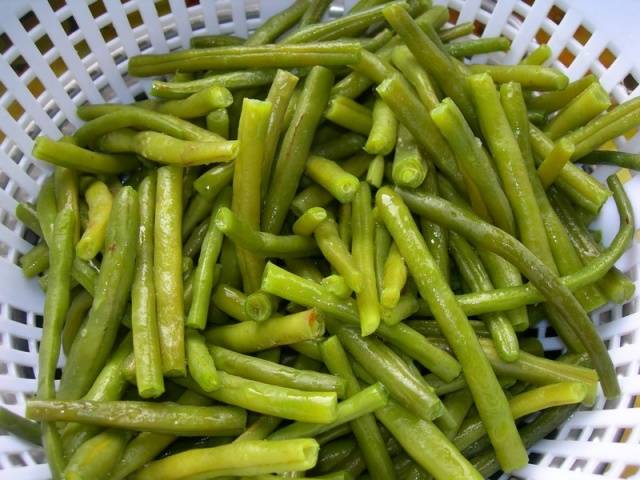

If it is enough to boil the leguminous varieties for just a few minutes, then the husked beans require more complex and lengthy processing:
- First, the fruits must be soaked in cold water. This is done for about 6-12 hours (depending on the variety).
- After soaking, the water is drained and replaced with fresh water.
- The beans are boiled in this water until tender, about 1.5-2 hours.
- You don't need to stir the beans while they are boiling.
- To prevent the beans from darkening during cooking, the dishes with them do not need to be covered with a lid.
- Salt the beans at the end of cooking.
The cultivation of legumes is accompanied by the release of nitrogen into the soil. Therefore, the culture does not make the soil "poor", like most other vegetables, but, on the contrary, enriches it with nitrogen and other useful substances.
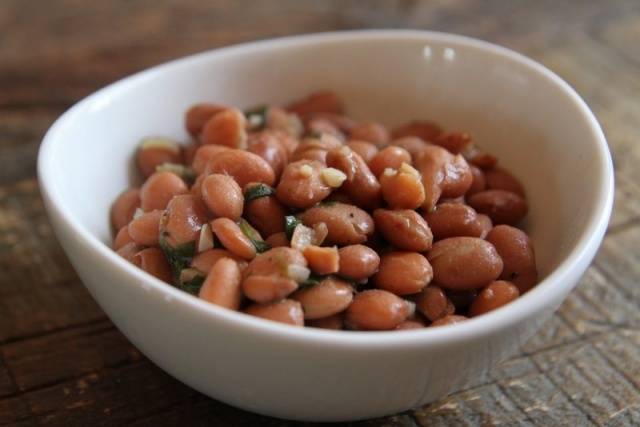

It is not difficult to grow beans in your own garden - this is an extremely unassuming culture. It is much more difficult to properly cook the harvested beans. It is especially important to cook the beans until fully cooked, because in their raw form they are not only unhealthy, but also poisonous. And in choosing a variety, photos and recommendations from our article will help.
Beans are a valuable source of protein, vitamins and microelements. When choosing a variety for planting, first of all, the method of eating the future harvest is taken into account - only grains or green pods. In addition, it is important to take into account the type of plant - bush or climbing. Some beans are intended for greenhouse cultivation, others for outdoor cultivation. The flavor, size and color of the beans are also taken into account.
In this article on our farm site, we will provide you with the best beans varieties with photo and title. The description of varieties will contain the most significant characteristics when choosing. We will help you choose a worthy variety of beans for yourself, based on the experience of experienced gardeners.


Harvesting
Bushy asparagus beans ripen slightly faster than curly beans. In any case, care must be taken to collect the pods in time, before they harden. It should be noted right away that this will have to be done often, since the pods do not ripen at the same time.


All-purpose beans can be harvested at various stages of development. And even if you forgot to pick the pods in time, you can not be afraid, in a fully ripe form it is no less tasty. Such seeds are also left for planting next year. They keep dry well, unlike young pods.Asparagus beans are great for freezing and preserving.
Types of beans according to the structure of the bush - photo and description
By the way the bush is arranged, types of beans are distinguished with the following names:
• Bush - compact low-growing bushes - 40-60 cm. Most of all, such beans are suitable for farmers, that is, for growing on an industrial scale. Bush beans are distinguished by early fruiting and a harmonious return of the harvest. Even harsh weather conditions are easily tolerated.
Pictured is a bush bean plantation
• Half-shoe Are leguminous vines that stretch 2 m in length. • Curly - this group includes varieties with lianas branches that can reach 5 m. The advantages of climbing beans are that they save land space and decorate the site. But since her growing season is long, she is not advised to grow in cold climates in the open field.
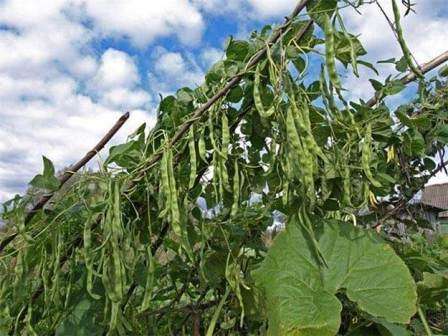

In the photo curly beans
Growing features
The disembarkation time depends on the weather conditions in your area. In southern cities, sowing can begin as early as early May. In other regions, one should rely on the complete end of frost. The soil should warm up well (mid-May - early June). Only then can you begin planting in open ground. Beans grow well and develop at temperatures of +15 ° C and above.
Important! Climbing beans are more thermophilic, so they need to be planted later than bush beans or use film shelters.


Soil preparation begins in the fall. It needs to be dug up and fed with mineral or organic fertilizers. In the spring, you can additionally add wood ash to each hole. The seeds are planted to a depth of about 5 cm. 10-20 cm are left between the plants, and 30-50 cm between the rows. Too dense planting will interfere with proper plant care and fruit development. To be sure that the seeds will not freeze, it would be nice to cover the area with a film that will help retain heat and moisture longer.
In colder regions, it will be better to plant beans with seedlings. While it is still cold outside, the sprouts will have time to get stronger, and as soon as the frost subsides, they can already be planted in the garden. If the summer in your area is warm, dry or sprouted seeds are used for sowing.
Advice! In order for the beans to sprout faster, the seeds must be soaked for a day before planting. So, the shell will soften, and the sprout will sprout without much difficulty.
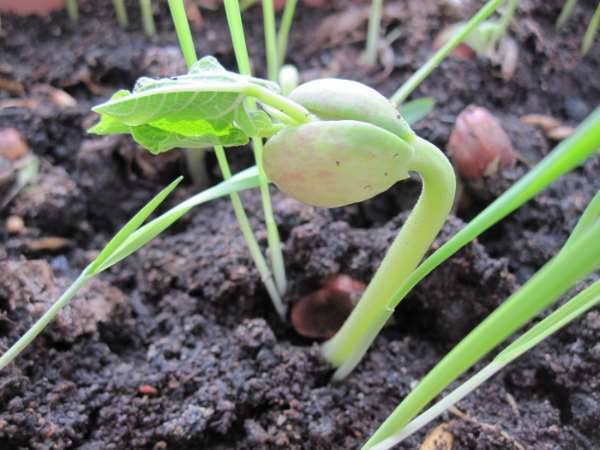

The soil must be kept moist throughout the growth of the plant. And after the beginning of flowering, soil fertilization is carried out. But this is not necessary, since beans are an unpretentious plant and tend to fertilize the soil with nitrogen itself.
Types of beans by method of use - names, photos and descriptions
Depending on the use of the crop, the following varieties of beans are distinguished:
• Peeling - only grains are eaten, the pods are too tough for use in cooking. These varieties are especially nutritious.


Shelling, or grain, beans
• Asparagus - grains are used together with the pod, which remains soft throughout the growing season.


In the photo, asparagus beans, eaten along with the pods
• Semi-sugar - until fully ripe, it is used as an asparagus, but at the end of the growing season the pod coarsens and becomes unsuitable for food.
Types of beans in appearance and nutritional value
String beans are presented in a variety of varieties that differ in color: green, yellow, purple. All varieties of shelling beans are divided into types according to the characteristics of the beans:
• Fava - dark brown beans can be eaten with the pod and, once fully ripe, without it.
In the photo, fava beans
• Vigna - the color of the beans is white with a black speck on the side. Varieties need less cooking time.
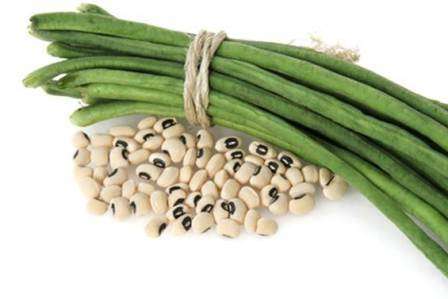

Vigna beans
• Chali - large white grains with special benefits for the body.


Chali beans in the photo
• Flajole - more often consumed with pods, the beans are green.
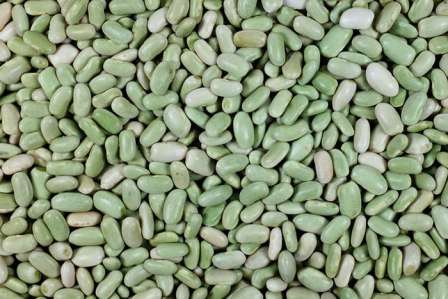

Beans Flazhole
• Pinto - White beans with bright red spots and high iron content.
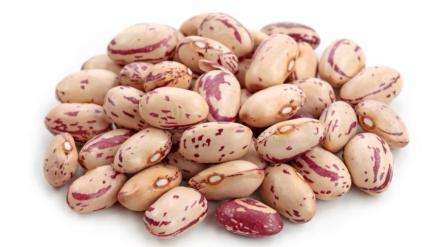

Pinto beans
• Black - small grains are dark outside and light inside; are characterized by a high protein content and antitumor effect.
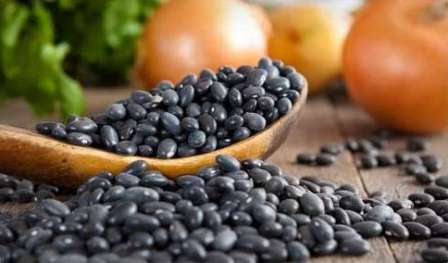

Black beans - photo matches description
• Kidney - red beans.
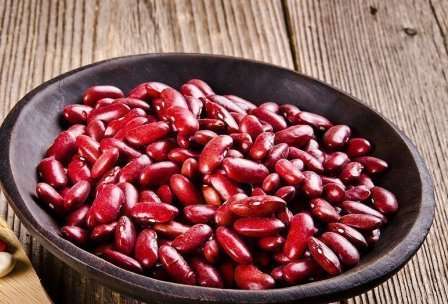

Kidney beans
• Lima - large white or green grains that strengthen the circulatory system.


In the photo, Lima beans
• Navy - small white grains, similar to beads and contain an abundance of vitamins.
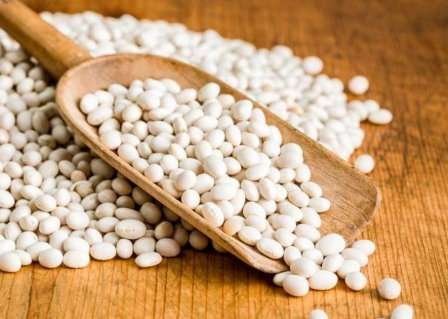

A type of beans called Nevi
Popular varieties of bush asparagus beans with photos and descriptions
Asparagus beans are not yet so popular in Russia, nevertheless, gardeners have already identified some varieties that grow well in our climate.
Compact bushes up to 40 cm in height delight with the early appearance of useful pods, the length of which reaches 12 cm. The beans are pink.
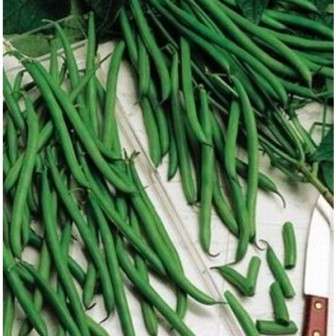

Sachs bean variety
General description of the culture
Asparagus beans are an annual vegetable from the legume family. This is a direct relative of common beans, but inside its pods there is no hard film and coarse fibers. Long, thin beans of this culture, when boiled, taste like young boiled asparagus. Many varieties have been bred, which differ from each other in terms of ripening, stem height, color and size of pods. Vigna has become widespread. It is an Asian variety with long (up to 1 meter) green juicy pods.
Asparagus beans grow up to 0.4-3 meters. The culture, depending on the variety, forms long curly stems or undersized bushes. Leaves are green, long-petiolate, ternary. Beans bloom with white, pinkish or pale purple flowers, collected in axillary brushes. After pollination, hanging, long beans of yellow, purple, cream, green color appear in their place.
Each contains 3 to 16 elliptical seeds inside. Asparagus beans are a heat-demanding crop. Its seeds begin to germinate at a temperature of 10-12 degrees Celsius, and for normal development the plant needs 20-25 degrees above zero.
Vegetable asparagus beans are grown specifically for the long, greenish pods. There is no parchment layer inside them, there are no coarse fibers between the valves, so the fruits are entirely edible. Unripe pods are eaten, which are heat-treated. Everyone knows turche beans - a spicy Asian appetizer made from boiled (no more than 2 minutes) fruits.
Beans are distinguished by useful properties, they contain a lot of proteins, vitamins, minerals and trace elements.
The asparagus variety is called sugar, it has a sweetish taste. It is a low-calorie dietary product (only 47 kilocalories per 100 grams).
Bean shape and color
Beans come in a variety of colors and shapes. The pods can be up to 20 cm long or 8-10 cm shortened. Their color corresponds to the color of the grains. There are varieties painted in monochrome or variegated shades.
Red
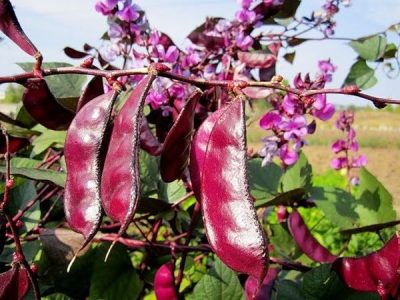

It is most popular in Russia and the countries of the American continent. Slightly inferior in taste to other species. Its grains are fleshy, tasty, high in proteins and antioxidants. The pods are colored pink, red and burgundy.
Varieties include varieties:
White
It is grown in many countries. White grains are nutritious and prized for their high iron content. Due to their low protein level, they are recommended for dietary nutrition. Dishes made from such beans are prepared faster than from other types of beans. The most common varieties are:
Black
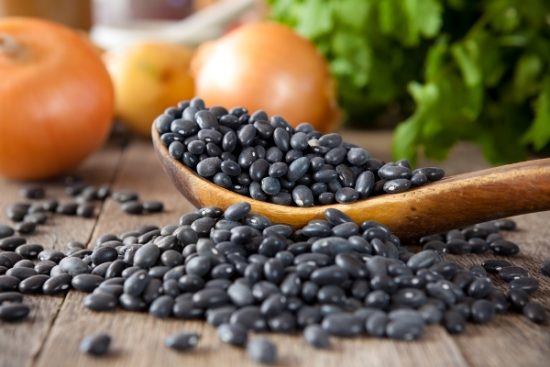

The seeds are dark purple, almost black in color. The peas are shiny with a pearlescent tint. 100 grams contain at least 9 g of protein and a lot of potassium. Beans and pods have a slightly sweet flavor. Varieties:
- Black opal;
- Grouse;
- Black Pearl;
- Preto;
- Kidney.
Variegated
The monochrome color of its fruits (pods and beans) is diluted with lighter or darker blotches.
- Black eye - the main white color is interspersed with dark spots;
- Pinto - brown and red dots are interspersed in a beige shade;
- Swallow - The white skin has a darker swallow's wing pattern.
Ripening terms
According to the growing season, beans are divided into groups: early, mid-season and late varieties. The longest period of time from the appearance of the first shoots to the beginning of fruiting is for crops that ripen at 130-140 days. After 80-100 days, varieties of medium ripening begin to bear fruit. Early crops give their first harvest after 65-80 days.
Curly varieties
The climbing bean varieties are, first of all, very beautiful, as can be easily seen in the photo.
Bluhilda
This famous variety of German selection is also distinguished by the beauty of climbing liana with long (up to 25 cm) and flat-rounded pods. The plant is so powerful that it cannot do without props, but it can easily braid even two-meter arches. Delicious pods ripen in medium early terms (from 60 days). And the yield can be called quite decent (about 2.4 kg / sq. M.) Despite its foreign origin, it differs in unpretentiousness to growing conditions.
Rumba
One of the best varieties of asparagus beans according to numerous reviews of gardeners. Indeed, in it the beauty of long light purple beans is combined with excellent yield indicators (up to 3 kg / sq.m.) And their excellent taste. Therefore, they are used for freezing, and for canning, and in a variety of culinary dishes. They ripen in 65-75 days. The flowers also have a beautiful purple color, and the rather large beans have an ocher hue. Differs in drought resistance.
Golden nectar
This vigorous variety is strewn with bright yellow blades of succulent beans as early as 67-70 days after germination. In length they reach 25cm. Their taste is wonderful, the beans are universal in use. The yield can vary, depending on growing conditions, from 1.2 to 2.8 kg / m2. The grains are white and medium in size.
Bean varieties for cultivation in different regions
The assortment of legume seeds is very large and varied; varieties and hybrids of beans of different ripening periods are available for sale. Gardeners from all regions are free to choose the crops that can be grown in their area.
| Regions | Early varieties | Mid-season | Late |
| Moscow region, Ukraine, Belarus | Oil King, Crane, Melody, Octave, Indiana, Seconds | Moscow white green-pod 556, Nomad, Swallow, Chocolate girl, | Fun, Fantasy, Dewdrop, Riddle |
| Ural and middle zone of Russia | Oran, Blue Lake, Sweet Courage | Pink, Bona, Fatima, Mauritanian | — |
| Siberia | Oil King, Malachite | Winner, Paloma | — |
Shrub beans are more suitable for growing in the cool climates of the Urals and Siberia. Heat-loving green beans prefer to grow in places with warm and long summers. In the Siberian region, late varieties do not have time to fully ripen.
Chemical composition [edit | edit code]
Bean fruits contain proteins (in some varieties up to 31%), 50-60% carbohydrates (mono- and oligosaccharides, starch), up to 3.6% fatty oil, carotene, potassium, phosphorus, a significant amount of copper and zinc [5] , nitrogenous substances (including essential amino acids), flavonoids (quercituron), sterols (β- and γ-sitosterols, stigmasterol) and organic acids (malic, malonic, citric). Contains vitamins: pyridoxine, thiamine, pantothenic and ascorbic acids.
In the aerial part of the beans, flavonoids (kaempferol-3-glucoside, kaempferol-3-glucoxyloside, myricetin-3-glucoside), leukoanthocyanides (leukodelfinidin, leukocyanidin, leucopelargonidin) and anthocyanins (cyanidin, -3-glucoside) [6].
Raw beans, especially red beans, contain significant amounts of toxic lectins. To neutralize them, a long (30 minutes [7]) boiling in water is used [8].
Testimonials
Sokolova Maria, 31 years old, Ukraine
In my garden, I grow various varieties of dietary beans: Countess, Chinese, Swallow.Caring for the bushes is simple, only the tall Chinese variety with long vines needs to be tied up. She dropped her off along the wall of the barn. The plant covers the unsightly appearance of the wall and in the spring decorates the site with its flowers.
Ivanova Tatiana, 44 years old, Novosibirsk
I plant beans in a greenhouse. I use undersized bush varieties Rubin and Krasavitsa for planting. I get an excellent harvest, I remove 2-3 buckets of pods from 10 bushes. I store the grains in the cellar or prepare salads from them with the addition of other vegetables. You need to cook them for a long time, so first I soak the beans for 24 hours.
Skvortsov Gleb, 52 years old, Cheboksary
I have a large garden, all the necessary plants fit. The beans do not require special care, they hardly get sick. After collecting the pods, I grind the green mass and embed it in the soil instead of fertilizing. I noticed that ants had disappeared in these places. The remains of the pods are used as food for pigs, rabbits and goats. They eat them with pleasure.
Benefit and harm
Asparagus beans are good for the body. The pods are eaten fresh, boiled, stewed, fried. Juice is made from them, they are dried, frozen. Asparagus beans can be a stand-alone dish or used as an ingredient in salads, soups, vegetable stews.
Benefit:
- prevents the occurrence of a heart attack;
- normalizes blood pressure;
- restores the body after ARVI;
- used to treat anemia;
- has a calming effect, normalizes sleep;
- used for diabetes, lowers blood sugar;
- is a diuretic;
- relieves joint pain.
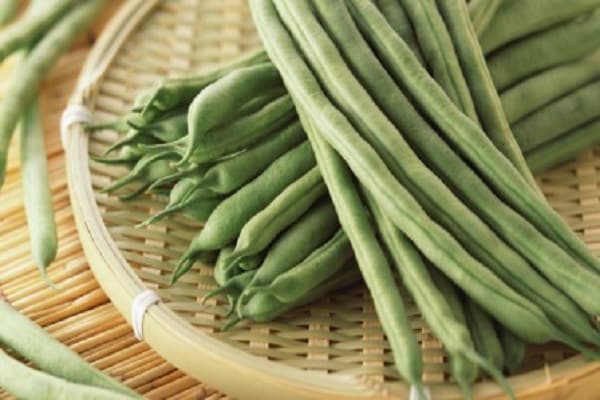

However, asparagus beans are not recommended for people with ulcers, cholecystitis, chronic gastritis, colitis. With caution, dishes made from beans should be treated by elderly people suffering from diseases of the gastrointestinal tract. It must be remembered that this product, like all legumes, can cause flatulence.



